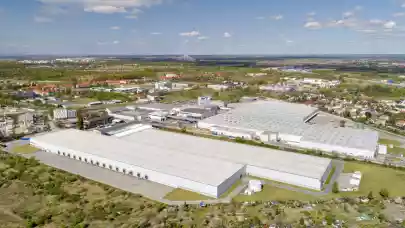
Cushman & Wakefield has summarised the performance of Poland’s largest office markets in the first quarter of 2025. In the first three months of 2025, office leasing volumes rose year-on-year by 16% in Warsaw and 27% in regional cities. Meanwhile, new supply remained low, with a rebound in development unlikely before 2027.
Supply: Construction activity to stall in the coming months
Office construction in Poland has slowed significantly over the past three years. Although a handful of new office projects have broken ground, development activity remains subdued. For example, in Warsaw, the overall construction pipeline has shrunk from nearly 750,000 sqm in early 2020 to approximately 180,000 sqm. In regional cities, around 200,000 sqm of new office space is currently under development, down from the pre-pandemic 850,000 sqm.
"At the end of the first quarter of 2025, Poland’s total office stock stood at just over 13.0 million sqm. New office supply in the three months to March totalled just 8,000 sqm, the lowest volume since 2005. Although a handful of office projects are scheduled for completion in the coming months, development activity remains stagnant. We estimate that Poland’s office market will expand by approximately 175,000 sqm in 2025, followed by just 100,000 sqm in 2026. A notable uptick in office deliveries is unlikely before 2027", comments Ewa Derlatka-Chilewicz, Head of Research Poland, Cushman & Wakefield.
The first quarter saw only two office completions: CD Projekt’s new headquarters in Warsaw (5,600 sqm) and Dymka 188 in Poznań (2,400 sqm, Dom Medialny Św. Wojciech).
Take-up: Leasing activity accelerates significantly
In the first quarter of 2025, total take-up in Poland’s largest office markets hit approximately 338,000 sqm, up by 22% year-on-year on average. This growth was driven by both Warsaw and regional cities. Warsaw saw a total of over 160,000 sqm transacted. While this is a relatively modest figure, it still represents a year-on-year rise of approximately 16%.
"Regional office markets outpaced Warsaw in terms of leasing activity, with transactions totalling nearly 177,000 sqm, up by 27% year-on-year. Demand continued to come predominantly from the IT sector, as well as services and manufacturing. Renewals accounted for the largest share of the transaction volume in regional cities at 48%, followed closely by new leases at 43%", comments Michał Galimski, Partner, Head of Regional Markets, Cushman & Wakefield.
The largest office transactions in regional cities took place in Wrocław. The deals saw a confidential tenant from the business services sector renegotiate its leases for 8,450 sqm at Business Garden Wrocław II and for 6,700 sqm at Business Garden I, and AXA XL renegotiate and expand its lease to 5,700 sqm at Pegaz.
Vacancies: Downward and upward movements
At the end of the first quarter of 2025, Poland’s average vacancy rate stood at 14.1%, down by 0.2 pp from the fourth quarter of 2024 and 0.4 pp year-on-year. Warsaw’s vacancy rate was 10.5%, a decrease of 0.1 pp from the previous quarter. Regional cities saw mixed trends in office vacancies, with downward movements recorded in Katowice and Krakow, and a rise of over 1 pp in Poznań and Wrocław.
"The average vacancy rate for regional cities remained high at 17.5%. That said, office availability across all the surveyed markets amounted to 1.84 million sqm, marking a 2% decrease relative to the first quarter last year", explains Vitalii Arkhypenko, Market Analyst, Cushman & Wakefield.
Rents: Rental rates are generally higher in central locations
In March 2025, prime office rents in Warsaw stood at €24.00-27.00/sqm/month in the Centre and €15.00-18.50/sqm/month in non-central locations. Rental growth was strongest for new office completions in the city centre. By contrast, office rents in existing buildings with high occupancy levels - both in central and non-central locations - rose largely in line with inflation, driven by the indexation of asking rents.
"Average prime office rents in central locations in regional cities were €13.00-17.00/sqm/month, with new office projects and buildings in premium locations commanding above-average rental rates. Elevated office construction, fit-out and project financing costs continue to significantly impact rental rates in projects underway. Rents in existing office buildings largely depend on the attractiveness of a building to prospective tenants and individual market conditions", concludes Jan Szulborski, Business Development & Insight Manager, Cushman & Wakefield.



